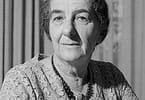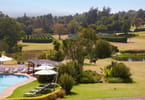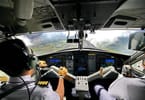The Senior Special Assistant (SSA) to Bayelsa State Governor on Tourism in Nigeria, Hon. Piriye Kiyaramo, has called on tour operators, travel agents, and other stakeholders to promote the point of bifurcation of the River Niger into River Nun and River Farcados as a pilgrimage site because of the reported healing effect of its water.
Mr. Kiyaramo lamented that despite being used in the past as a spiritual hotspot by people from different faith and creed, making it a potential hub for religious pilgrimages, the site has not been given due recognition and properly preserved as a cultural tourism asset.
Speaking at the Palace of the Odio-Logbo of Okugbe Isoko Kingdom, Odhe II, (JP), His Majesty, Dr. (Capt.) Frank N. Okurakpo, during an exploration visit to the point where the River Niger bifurcated (splits) into River Nun and River Farcados, in Sagbama local government area of Bayelsa State, the Senior Special Assistant to the governor on Tourism, described the site as:
A unique cultural tourism asset to Bayelsa State and the entire Niger Delta region because of the mystery surrounding the spot.
Accompanied by the state chairman of the Nigeria Union of Journalists (NUJ), Bayelsa State Council, Comrade Samuel Numonengi, the governor’s aide explained that the River Niger which has its source from Fouta Djallon mountainous region in West Central Guinea, splits into River Nun and River Farcados after meandering through the borders of the Republic of Benin to Nigeria to meet the Atlantic ocean.
According to Hon. Kiyaramo, the deltaic portion of the River Niger, now referred to as the Niger Delta region, remains an important ecological and commercial zone, being a major site for petroleum production in Nigeria, in addition to its endowment in terrestrial and aquatic wildlife, having a very fertile land for agriculture.
While receiving the entourage of the Senior Special Assistant to the governor on Tourism in his Palace, His Majesty, Dr. (Capt.) Frank N. Okurakpo, Odhe II (JP) Odio-Logbo of Okugbe Isoko Kingdom, described the bifurcation point of the River Niger into River Nun in Bayelsa and River Farcados in Delta state as the “Horn of the Niger Delta region” where the story of the Niger Delta began decades ago.
According to Majesty, Dr. (Capt.) Frank N. Okurakpo, who incidentally is a master mariner, took time to explain the significance of the bifurcation site to Bayelsa, the Niger Delta and the country in general in terms of its cultural tourism potential, just as he described the bifurcation point as the “Shrine of Niger Delta.”
“We don’t need crude oil to survive because of our rich natural endowment in the region. The point of bifurcation is the holy site of the Niger Delta region.
“The water there is divine, having healing potency, in addition to other natural resources.
“The point of bifurcation is the Shrine of the Niger Delta and indeed holy site of the Niger Delta region,” the royal father reiterated.
Also speaking, the chairman of Nigeria Union of Journalists (NUJ), Bayelsa State Council, Comrade Samuel Numonengi, noted that the bifurcation point of the River Niger, being Africa’s 3rd longest river, into River Nun in Bayelsa and River Farcados in Delta state, makes it a potential spot for religious pilgrimage activities, considering the healing potency and spiritual importance to both locals and visitors.
According to the NUJ chairman, his council will continue to compliment the tourism promotion efforts of the prosperity administration under Senator Douye Diri, with a view to attracting visitors and investors to the tourism sector of the state.
In his remark, the media consultant to the Royal father, Mr. Victor Christopher, a veteran journalist, spoke about the rich cultural heritage and biodiversity of Okugbe Isoko Kingdom and called on the state government to pay due attention to the area because of its economic importance in the area of food security.
Recall that bifurcations are different from confluences in that many confluences are considered important sites for cities and trade. But due to the semi-permanence of most bifurcated rivers and their uncommon occurrences, the concept of construction is not largely exhibited at sites of river bifurcation.
Deltas are very important to humans, as the delta distributary regions provide homes to roughly half a billion people and are exceptionally biologically rich.
The River Niger has been an important source of water to the people of the region since the first inhabitants settled there centuries ago. Although the exact origin of the name Niger is not known, the word was also used to name two countries in Africa: Nigeria and Niger.
The River Niger is the world’s 11th longest river and it is Africa’s 3rd longest river, after the Nile River and the Congo River. It flows through several countries including Guinea, Mali, Niger, Benin, and finally Nigeria, before reaching the Gulf of Guinea and the Atlantic Ocean.
WHAT TO TAKE AWAY FROM THIS ARTICLE:
- Okurakpo, who incidentally is a master mariner, took time to explain the significance of the bifurcation site to Bayelsa, the Niger Delta and the country in general in terms of its cultural tourism potential, just as he described the bifurcation point as the “Shrine of Niger Delta.
- Accompanied by the state chairman of the Nigeria Union of Journalists (NUJ), Bayelsa State Council, Comrade Samuel Numonengi, the governor’s aide explained that the River Niger which has its source from Fouta Djallon mountainous region in West Central Guinea, splits into River Nun and River Farcados after meandering through the borders of the Republic of Benin to Nigeria to meet the Atlantic ocean.
- Kiyaramo, the deltaic portion of the River Niger, now referred to as the Niger Delta region, remains an important ecological and commercial zone, being a major site for petroleum production in Nigeria, in addition to its endowment in terrestrial and aquatic wildlife, having a very fertile land for agriculture.























